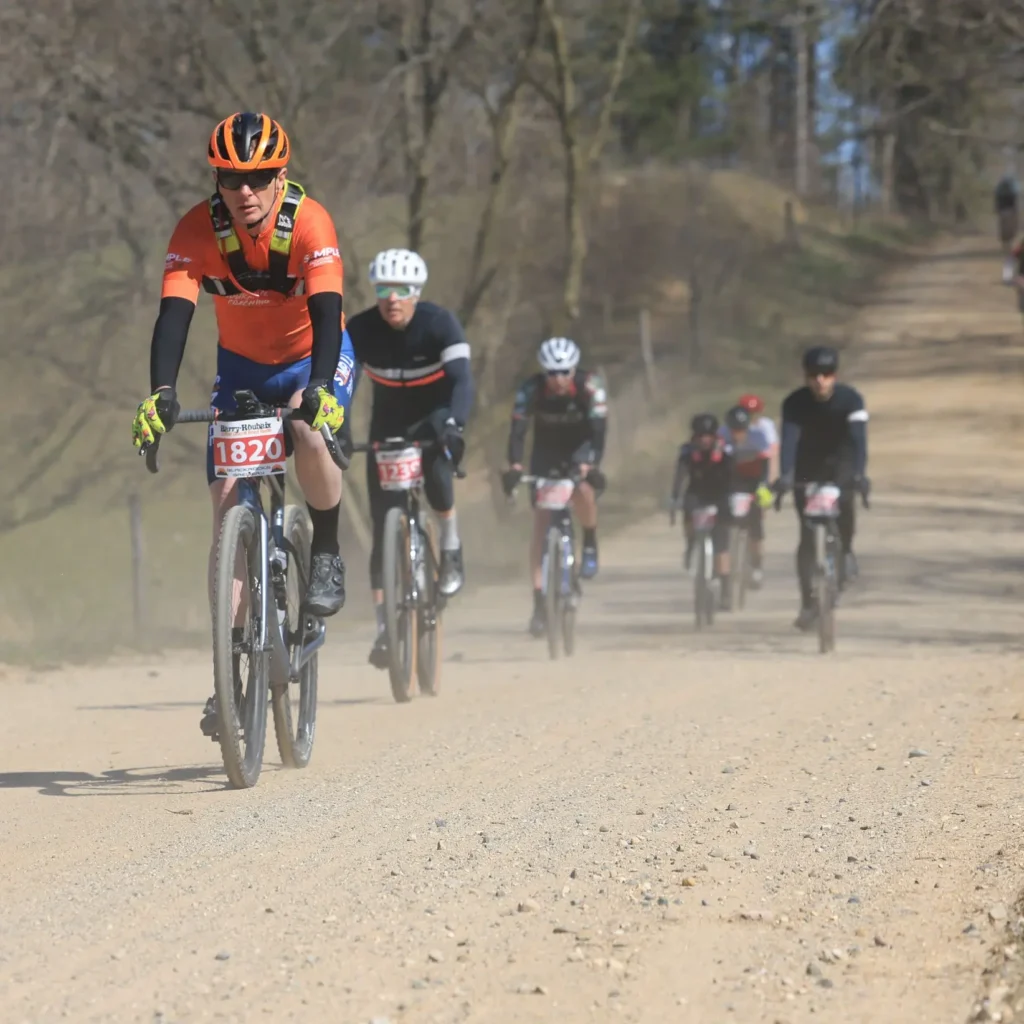Optimize Your Cycling Potential: Balancing Endurance and Intensity Workouts
I’ve been having discussions with one of my newer cycling athletes about endurance riding.
They consistently ride sort of hard all the time, and often add extra rides in at similar pacing.
And while there’s a place for riding sort of hard, like in group rides or focused tempo intervals, this rider is slowly starting to understand the value of doing the long, slow endurance rides.
So if your goal is gravel, cyclocross, or even trail running, we want to build lots of low-stress volume by doing the endurance rides and then having a smaller amount of really hard intervals!

Top pro cyclist does mostly volume riding
Velo Magazine published a story based on a study that analyzed a Pro Tour rider’s training files before doing well at the Giro d’Italia.
The rider, doing the kind of typical 25 to 30-hour training weeks we can’t hope to replicate, did most of his volume at low intensity.
“It’s an age-old training philosophy that you should either train “hard” or “easy,” and nothing in between. And this rider has got that down to a T.”
However, the rider also did some focused tempo riding, so this wasn’t entirely polarized training.
Additionally, the rider often did the medium-intensity riding within the low-intensity longer days.
Gareth Sandford on Twitter summarized some of the highlights of this study:
- The rider typically alternated hard and easy days.
- Time at high intensity was typically very short and very intense.
- High-intensity intervals were usually done within a long ride.
- Many long low-intensity sessions included some focused tempo work.
- There were very few days completely off the bike.
Ride slow to build volume
First, there are many reasons to ride slow in your endurance zone.
Here are several reasons why endurance training is emphasized:
- Aerobic Capacity: Endurance training improves the efficiency of the cardiovascular system, enhancing the body’s ability to utilize oxygen during exercise. This leads to better endurance and sustained performance over long distances.
- Fat Utilization: Training in the endurance zone encourages the body to use fat as a primary fuel source. This is beneficial for cyclists, as it helps conserve glycogen stores, which are essential for high-intensity efforts.
- Muscle Adaptation: Endurance training stimulates adaptations in muscle fibers, making them more resistant to fatigue and better equipped to handle prolonged efforts.
- Mitochondrial Density: Endurance training increases the number and efficiency of mitochondria in muscle cells. Mitochondria are the “powerhouses” of the cell responsible for producing energy, so more mitochondria mean greater energy production, enhancing endurance.
- Recovery: Endurance training is less taxing on the body compared to high-intensity interval training (HIIT) or other intense workouts. This allows cyclists to train frequently without risking burnout or overtraining.
- Base Building: Endurance training forms the foundation of a cyclist’s fitness. Once a solid endurance base is established, cyclists can then incorporate higher-intensity workouts to further improve performance.
Go really hard during interval day
Second, doing more slow volume makes it easier to do hard intensity.
If you are more rested, you can go harder and get more out of your intensity day.
Here are several reasons to do high-intensity training:
- Improving Anaerobic Capacity: High-intensity efforts, such as intervals or hill sprints, target the anaerobic energy system, which provides energy for short bursts of intense activity. By training at high intensity, cyclists can improve their anaerobic capacity, enabling them to sustain harder efforts for longer periods and handle surges or attacks during races more effectively.
- Increasing Power Output: High-intensity training helps cyclists develop greater muscular strength and power. This is essential for accelerating, climbing steep gradients, and sprinting to the finish line. By pushing their limits in short, intense intervals, cyclists can improve their ability to generate high levels of power.
- Enhancing Speed and Endurance: While endurance training builds the foundation for long-distance cycling, incorporating high-intensity efforts can help cyclists increase their overall speed and endurance. Intervals and other high-intensity workouts improve the body’s ability to buffer lactate and clear metabolic byproducts, delaying the onset of fatigue during intense efforts.
- Boosting Metabolic Rate: High-intensity intervals elevate the metabolism and stimulate the body’s post-exercise oxygen consumption (EPOC), also known as the “afterburn” effect. This results in continued calorie burning even after the workout is over, which can be beneficial for weight management and improving overall fitness.
- Breaking Plateaus: Introducing variety into training routines helps prevent plateaus and keeps the body adapting. High-intensity sessions provide a different stimulus than steady-state endurance workouts, challenging different energy systems and muscle fibers. This variation can lead to continued improvements in performance.
- Mental Toughness: Enduring the discomfort of high-intensity efforts builds mental toughness and resilience, which are invaluable during competitive races or challenging rides. Learning to push through discomfort and maintain focus during intense intervals can help cyclists perform better when the pressure is on.
Hard days, easy days
The idea from all of this is to go slow most of the time, go really hard some of the time, and do some structured tempo work some of the time.
This kind of structure will help you get the volume you need to improve your performance, build the speed you need to be successful, and improve your overall condition and fitness through consistent training.
Also, make sure you include strength training and yoga to enable you to do the high-volume training.
My athlete is starting to see that he can ride harder on his interval days when he does his endurance days more easily.
Three things to know about training structure:
- Do slow endurance rides most of the time.
- Do some high-intensity training
- Include strength training and yoga into your routine
Need more?
GET A FREE Core Strength and Stability training video when you opt in to receive my weekly blog posts about what works in endurance sports.
SIGN UP FOR A Virtual Coffee so we can discuss your goals, ask questions, and talk about making your endurance training more effective, fun, and Simple.
Paul Warloski is a:
- USA Cycling Level 2 Coach
- RRCA Running Coach
- Training Peaks Level 2 Coach
- RYT-200 Yoga Instructor
- Certified Personal Trainer





